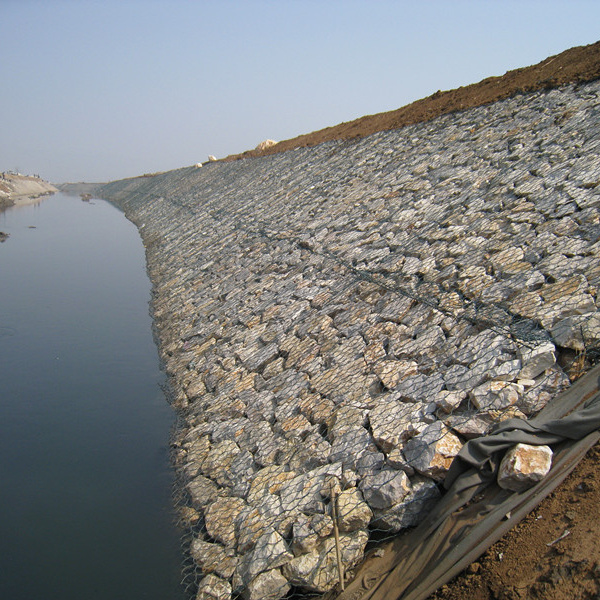ನವೆಂ . 12, 2024 09:59 Back to list
best retaining wall gabion
Understanding the Best Retaining Wall Gabion Solutions
When it comes to landscape architecture and civil engineering, retaining walls are essential for managing soil erosion, providing stability, and enhancing aesthetics. Among various retaining wall materials and designs, gabions have emerged as one of the best solutions for several reasons. This article will explore what gabion retaining walls are, their advantages, and the best practices for using them.
What is a Gabion?
Gabions are essentially wire mesh cages filled with stones, rocks, or other materials. The term gabion comes from the Italian word gabbione, meaning big cage. These structures can be used alone or in combination with other retaining wall systems. The flexibility of design and construction makes gabions a popular choice in different landscape scenarios.
The Advantages of Gabion Retaining Walls
1. Cost-Effectiveness Gabions are often more affordable than traditional retaining wall materials such as concrete or stone. The use of local stones for filling can minimize transportation costs while providing a natural look.
2. Environmental Benefits Gabion walls promote natural drainage through the gaps in the stones. This permeable design helps manage water runoff, reducing erosion and flooding in surrounding areas. Additionally, they can be designed to incorporate vegetation, further enhancing their ecological value.
3. Durability Constructed from galvanized steel or stainless steel wire, gabions are resistant to corrosion and can withstand harsh environmental conditions. The sturdy wire mesh cages adapt well to soil movements, making them less prone to damage over time.
4. Aesthetic Appeal Gabions can be filled with various materials such as river rocks, boulders, or even recycled materials, allowing for a custom appearance that can complement any landscape design. Over time, these walls can support vegetation growth, enhancing their visual appeal.
5. Versatility Gabion walls can be used in diverse applications — from small garden features to large environmental engineering projects. Their flexibility allows them to be molded into various shapes and sizes, enabling creative design solutions.
best retaining wall gabion

Best Practices for Installing Gabion Retaining Walls
1. Site Assessment Before starting, conduct a thorough site assessment to understand soil conditions, drainage patterns, and the overall landscape. Proper planning can help in determining the dimensions and materials needed for the gabion wall.
2. Foundation Preparation A solid foundation is crucial for the stability of a gabion wall. Clear and level the area where the wall will be installed, ensuring proper drainage to avoid water accumulation behind the wall.
3. Choosing the Right Wire Mesh The quality of wire mesh is vital for durability. Opt for galvanized or PVC-coated wire to ensure resistance to rust and weather conditions.
4. Filling the Gabions Use uniform-sized stones for filling to ensure stability and uniformity. Larger stones should be placed at the bottom for added support, while smaller stones can be used on top for aesthetics. Avoid using fill materials that can easily erode.
5. Securing the Gaps Once the gabions are filled, secure the lids tightly to prevent any shifting of materials. This practice is essential to maintain the structural integrity of the wall.
6. Incorporating Vegetation To enhance aesthetics and functionality, consider planting vegetation in or around the gabion wall. This can help in camouflaging the wire mesh while providing additional stability through root systems.
Conclusion
Gabion retaining walls offer a blend of practicality and aesthetic appeal, making them an excellent choice for various landscapes. With their cost-effectiveness, environmental benefits, and flexibility, gabions stand out as one of the best retaining wall solutions available today. By following best practices in installation and design, homeowners and landscape architects can create durable, functional, and visually pleasing structures that meet their outdoor needs. As sustainable building practices grow in importance, gabions may become even more prevalent in modern landscaping and civil engineering projects.
-
hesco-gabion-baskets-for-coastal-erosion-prevention
NewsAug.22,2025
-
longevity-and-durability-of-river-rock-gabion-walls
NewsAug.22,2025
-
how-to-integrate-gabion-3d-walls-in-urban-planning
NewsAug.22,2025
-
reno-mattress-gabion-applications-in-civil-engineering
NewsAug.22,2025
-
how-to-install-wire-mesh-for-gabion-baskets-properly
NewsAug.22,2025
-
best-materials-for-filling-a-chain-link-gabion
NewsAug.22,2025
-
Wire Mesh Thickness Impact on Gabion Wall Load Bearing
NewsAug.12,2025






